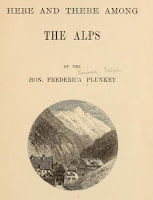The British Raj was the British rule in the Indian subcontinent between 1858 and 1947 and the term conceals numbers of Irish people. Patrick O’Leary in his ‘Servants of the Empire, the Irish in the Punjab 1881-1921’, details the contribution made by many Irish in that region of India.
The influence on Indian history of Irish-born administrators and soldiers was quite remarkable. In the mid-eighteenth century, French influence ended in a battle in which both sides were led by Irish generals (the French side included elements of the Irish Brigade). During the 1890s seven of the eight Indian provinces were ruled by Irish pro-consuls while at about this time three Commanders-in-Chief in India were Irish-born and another claimed to be. Tipperary-man Michael O’Dwyer was the administrator ultimately responsible for the infamous Amritsar Massacre. The many Irish doctors in the Indian Medical Service had a profound effect on research into the treatment of tropical diseases. ( Dr. P.O'Leary)
 |
| Bruce. Wikipedia |
R.I Bruce (from Co Cork), on leave from the NW Frontier trekked in the mid 1870s over Hampta Pass, Parang La (5,578m) and Rohtang Pass.
 |
| Kelly. Wikipedia |
Colonel James Kelly and Lieutenant Cosmo Stewert took a regiment of Punjab Pioneers over the Shandur Pass (3,700m) in 1895 in the relief of Chitral; a military operation but a feat of mountain travel.
Go to Home for full site map


